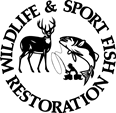Lake Wood 2007 Survey Report  (PDF 393.2 KB)
(PDF 393.2 KB)
If you have difficulty accessing the information in this document, contact the TPWD Inland Fisheries Division for assistance.
Lake Wood - 2007 Survey Report
Prepared by Greg Binion and John Findeisen
Inland Fisheries Division
District 1-E, Mathis, Texas
This is the authors' summary from a 24-page report. For a copy of the complete report, use the download link in the sidebar.
Lake Wood (H-5) was surveyed in fall 2007 using trap nets and electrofishing and in spring 2008 using gill nets to assess important sport fish populations. This report summarizes the results of these surveys and contains a management plan for the reservoir based on those findings.
Reservoir Description
Lake Wood (448 acres) is located on the Guadalupe River in Gonzales County, and was constructed in 1931 by the Texas Hydroelectric Commission. Its main utility is for water supply, hydro-power production and recreational purposes. Angler and boat access is adequate with two public boat ramps; however there are no handicap-specific facilities at either location. Habitat consisted of boat docks, rocks, floating-leaved vegetation, limited emergent vegetation, exotic vegetation (water hyacinth, water lettuce, and recently East Indian hygrophila) and stumps. Hydrilla has not been observed in the reservoir since 2004. However, water hyacinth is still present and creates access problems. Floating fragments of East Indian hygrophila were present in the reservoir.
Management History
Important sport fish include channel and flathead catfish, largemouth bass, and crappie. White bass are present in this reservoir but in low abundance. Blue catfish have been stocked in this reservoir but are not the dominant catfish species. The 2004 management plan focused on largemouth bass genetics, monitoring and controlling nuisance aquatic vegetation, and enhancing fish habitat. Florida largemouth bass were not stocked into the reservoir as recommended in the 2004 management plan. Guadalupe Blanco River Authority (GBRA) contracted a certified commercial applicator to control nuisance vegetation, specifically water hyacinth. Beginning in 2007, GBRA and TPWD began working cooperatively towards a better focused control of water hyacinth. A nuisance aquatic management plan was drafted in January 2008 and mechanical removal of water hyacinth was initiated in the spring of 2008. No hydrilla has been observed in the reservoir since 2004. Enhancement of fish habitat was put on hold until water hyacinth is controlled. The controlling authority was concerned that brush piles would break loose and possibly damage the dam and its gates.
Fish Community
- Prey species: Gizzard shad continued to be present in the reservoir whereas few threadfin shad were collected. Although gizzard shad catches were lower than previous years, the majority present were small enough to be utilized by predators. As with gizzard shad, bluegill abundance was lower than previous surveys. However, all bluegill sampled were less than 7-inches and thus susceptible to predation.
- Catfish: Survey catch data of channel catfish indicated few fish less than 12-inches in length, while the majority collected were greater than the minimum length limit of 12-inches, providing adequate angling opportunities. Flathead catfish were present in the reservoir with a significant proportion (63%) greater than or equal to the minimum 18-inch size limit.
- Largemouth bass: Largemouth bass are present in the reservoir but in low numbers. Few largemouth bass were collected as reproductive success may be limited due to a lack of complex habitat such as submersed vegetation and timber stands.
- White crappie: White crappie is present in the reservoir but the relative abundance is quite low.
Management Strategies
- Continue to manage sport fisheries under existing regulations.
- Continue cooperative efforts with GBRA to monitor and control nuisance aquatic vegetation (i.e. water hyacinth and hygrophila). Floating fragments of East Indian hygrophila were observed and the spread of this plant will be monitored. Potential habitat enhancement projects will continue to be explored with GBRA and home-owners via introduction of native submersed vegetation once water hyacinth control is established.
- Expand sampling to include exploratory spring electrofishing due to decreased catch rates and relative abundance for most species.

Performance Report as required by Federal Aid in Sport Fish Restoration Act Texas Federal Aid Project F-30-R-33 Statewide Freshwater Fisheries Monitoring and Management Program